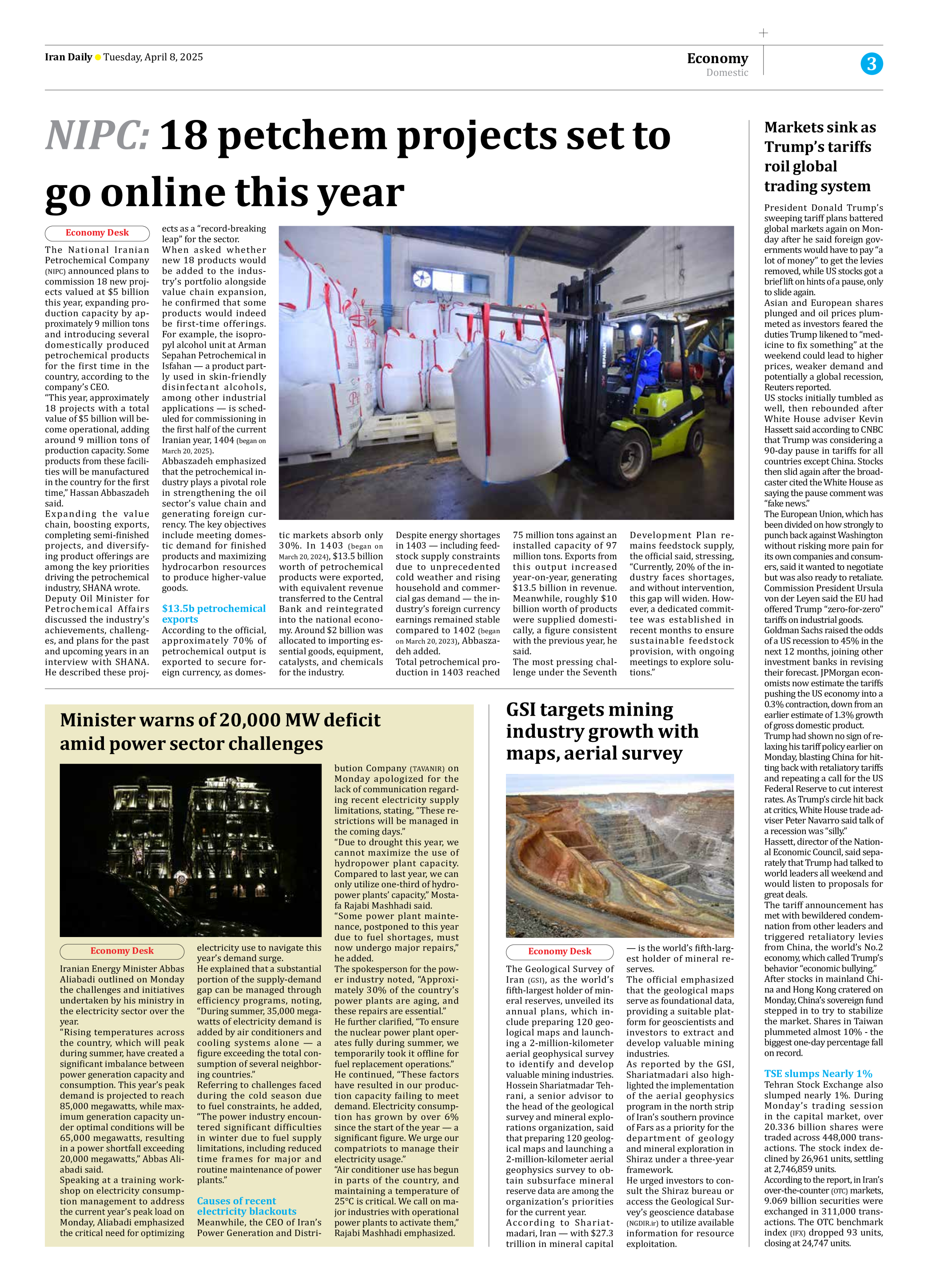
NIPC: 18 petchem projects set to go online this year
The National Iranian Petrochemical Company (NIPC) announced plans to commission 18 new projects valued at $5 billion this year, expanding production capacity by approximately 9 million tons and introducing several domestically produced petrochemical products for the first time in the country, according to the company’s CEO.
“This year, approximately 18 projects with a total value of $5 billion will become operational, adding around 9 million tons of production capacity. Some products from these facilities will be manufactured in the country for the first time,” Hassan Abbaszadeh said.
Expanding the value chain, boosting exports, completing semi-finished projects, and diversifying product offerings are among the key priorities driving the petrochemical industry, SHANA wrote.
Deputy Oil Minister for Petrochemical Affairs discussed the industry’s achievements, challenges, and plans for the past and upcoming years in an interview with SHANA. He described these projects as a “record-breaking leap” for the sector.
When asked whether new 18 products would be added to the industry’s portfolio alongside value chain expansion, he confirmed that some products would indeed be first-time offerings. For example, the isopropyl alcohol unit at Arman Sepahan Petrochemical in Isfahan — a product partly used in skin-friendly disinfectant alcohols, among other industrial applications — is scheduled for commissioning in the first half of the current Iranian year, 1404 (began on March 20, 2025).
Abbaszadeh emphasized that the petrochemical industry plays a pivotal role in strengthening the oil sector’s value chain and generating foreign currency. The key objectives include meeting domestic demand for finished products and maximizing hydrocarbon resources to produce higher-value goods.
$13.5b petrochemical exports
According to the official, approximately 70% of petrochemical output is exported to secure foreign currency, as domestic markets absorb only 30%. In 1403 (began on March 20, 2024), $13.5 billion worth of petrochemical products were exported, with equivalent revenue transferred to the Central Bank and reintegrated into the national economy. Around $2 billion was allocated to importing essential goods, equipment, catalysts, and chemicals for the industry.
Despite energy shortages in 1403 — including feedstock supply constraints due to unprecedented cold weather and rising household and commercial gas demand — the industry’s foreign currency earnings remained stable compared to 1402 (began on March 20, 2023), Abbaszadeh added.
Total petrochemical production in 1403 reached 75 million tons against an installed capacity of 97 million tons. Exports from this output increased year-on-year, generating $13.5 billion in revenue. Meanwhile, roughly $10 billion worth of products were supplied domestically, a figure consistent with the previous year, he said.
The most pressing challenge under the Seventh Development Plan remains feedstock supply, the official said, stressing, “Currently, 20% of the industry faces shortages, and without intervention, this gap will widen. However, a dedicated committee was established in recent months to ensure sustainable feedstock provision, with ongoing meetings to explore solutions.”







